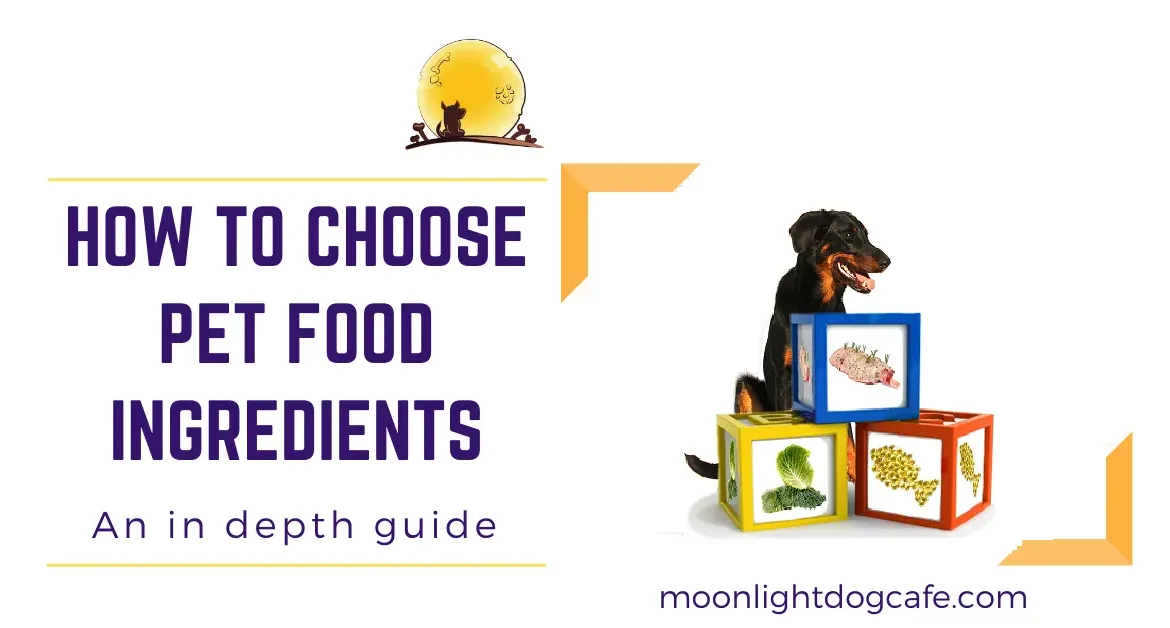
Ultimate guide: Choosing the best pet food. What should be in your dog or cat’s food.
What are the necessary building blocks in your pet food for optimal health?
To understand the necessary building blocks in your pet food for optimal health, we need to start from the basics of the dog and cat’s biology. Feeding a cow meat just doesn’t make sense. First of all, we will start by addressing the controversy of whether dogs are carnivores or omnivores. Secondly, we will document the necessary building blocks in pet foods as a benchmark as this is key to assessing whether pet food is complete and healthy.
When pets are younger, it seems that you can feed them pretty much anything because it isn’t often that health issues show up immediately. They may seem resilient and we expect they will not encounter any major health issues. However, years down the road when they are not just pets but integral members of the family, it can be a shock that your cat or dog develops bowel disease, diabetes, kidney disease or pancreatitis to name a few.
We often forget that what we eat is literally broken down and assimilated by the body same as our pets. Note that we are not saying that food is the only factor that can cause or mitigate diseases. Other factors such as genetics, activity level, immunization and environment can have an impact on your pet’s life and health.
Are dogs omnivores or carnivores?
Dogs and cats are carnivores. In order to have a conversation about what food dogs or cats require, this distinction is important. Cats are obligate carnivores while dogs are adapted to carbohydrates. Here are the reasons why both are carnivores :
- Cats have no salivary amylase for carbohydrate pre-digestion while dogs have little salivary amylase. All this means is that they should be eating primarily meat.
- Physiologically, the teeth of dogs and cats are meant for chewing/ tearing meat & grinding bones.
- In addition, they have shorter digestive tracts, as they don’t need to break plant matter, which takes a longer time. The stomach pH of dogs and cats are also more acidic to help them digest meat and bones better.
Note that we are not making any evolutionary claims just physiological evidence to back the fact that dogs and cats are carnivores.
What nutrients do dogs and cats need from pet food
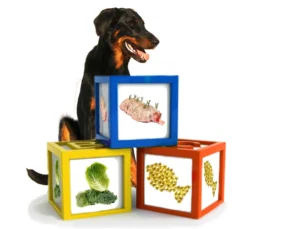
Dogs and Cats need good biologically-available protein
The first basic necessary building block for dogs and cats is protein. Proteins are only important because of the 22 amino acids that both dogs and cats need to be healthy. Amino acids are the building blocks of proteins. Dogs can produce 12 of these amino acids on their own while cats can only make 11 amino acids. The remaining amino acids that pets need from pet food are arginine, histidine, lysine, leucine, isoleucine, methionine, phenylalanine, threonine, trytophan, valine and taurine for most dogs and all cats:
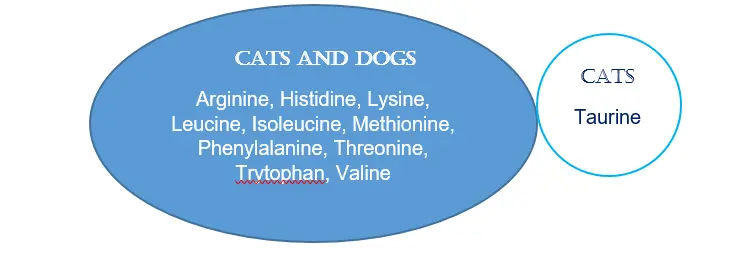
The best sources of all these amino acids for dogs & cats tend to be meat, animal organs & in some cases fish.
However, not all proteins are created equal.
For 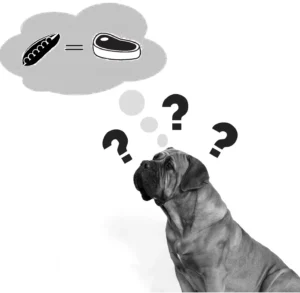 example, your pet’s food could have 40% protein but a portion could be provided by soy, peas or meat by-product. Meat by-product could include animal hide and hooves. Although you have a high protein content (called biologic value (BV)), these are not easily digestible forms of protein for cats and dogs.
example, your pet’s food could have 40% protein but a portion could be provided by soy, peas or meat by-product. Meat by-product could include animal hide and hooves. Although you have a high protein content (called biologic value (BV)), these are not easily digestible forms of protein for cats and dogs.
Soy has been used as an inexpensive way of adding protein (BV of 67%) to pet foods. However, it is not a species-appropriate pet food, which means dogs and cats won’t naturally seek this out as food. Using soy also ignores that it can cause food sensitivities, potential hormonal issues, and interfere with thyroid function. However, don’t congratulate yourself yet if your pet food does not have soy or peas in it
In terms of plant protein, Soy is a good source of Lysine and Tryptophan. Note that as your dog gets older, their requirement for proteins go up even in animals with kidney disease. A study by Dr. Delmar Finco, showed that “mortality was actually higher in the low protein group”1 for dogs with renal disease where “there were no adverse effects of the high protein diet.”2
Sources of good Fats (Omega-3 fatty acids) for Dogs and Cats
Next in terms of need is Fats, which is rich in energy and provides the essential fatty acids (omega 3 and omega 6s).
Omega-3 fatty acids tend to have an anti-inflammatory benefit and common sources tend to be flaxseed oils and fish/krill oils.
We’d suggest the krill oils are better as they have the antioxidant Astaxanthin but you could rotate between these sources.
Vitamins and minerals in our pet’s food
Vitamins and minerals in food are essential for life. There are 2 types of Vitamins: 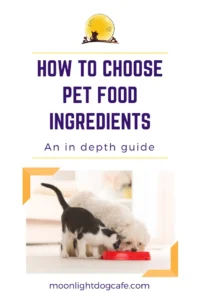
- Fat soluble Vitamins – (Vitamin A,D, E and K) which can accumulate in the body and become toxic.
- Water soluble Vitamins – (Vitamin C and the B vitamins i.e. thiamin, riboflavin, niacin, pantothenic acid, pyridoxine, biotin, folic acid, cobalamin) – they are not stored in the body and can be eliminated through pee.
You’ve probably seen some of these on the dry pet food bags. However, we will write another blog to cover synthetic vitamins vs. natural vitamins later.
It is important to note that vitamins are sensitive to light, heat and oxidation so pre-packaged vitamin mixes must be handled carefully.
Sources of Fat Soluble vitamins for your dog or cat
| Good Sources of Vitamins for dogs and cats | Key function of the Vitamins in dogs and cats | |
| Vitamin A | Liver, fish, eggs | Vision, skin and hair |
| Vitamin D | oily fish (tuna) and liver | Bone growth, calcium and phosphorus regulation |
| Vitamin E | Cold pressed vegetable oils, liver | Antioxidant |
| Vitamin K | Intestinal bacteria in pets can produce this but not in sufficient quantities. Liver, meat, kelp, egg yolk | Blood clotting and normal blood functions |
Water soluble vitamins for dogs and cats:
- Vitamin C is not required as dogs and cats can make their own. However, Vitamin C has been considered to prevent hip dysplasia and urinary tract infections. Common sources include citrus fruits.
- The B vitamins, play a wide role in nerve function, skin, hair, growth, cell energy and formation of blood cells. Good sources of these vitamins tend to be found in organ meats, tripe and from yeast as well as wheat germ.
Minerals are the inorganic component of the diet, which are necessary for bones, blood, skin and other important functions.
Minerals are usually referred to as ‘ash’ which is what is left over after the food is burnt.
Here is a quick list without going into too much detail about what each is for: Calcium, Phosphorous, Magnesium, Chloride, Sodium, Potassium, Iron, Zinc, Manganese, Copper, Iodine and Selenium.
Common sources of minerals include animal bone, meat, fish, eggs and for some minerals, you can find them in green vegetables e.g. broccoli and spinach.
Wait! Don’t go to the store and pick up the bag of pet food with the highest ‘ash’ content just yet.
Water for your pets is for optimal health
Dogs and cats need an adequate source of water/moisture. Water is a major part of the animal’s body and can be obtained primarily by either drinking or eating. It is important to always have fresh water available for our pets and this component is one that it is important to have the right amount.
Cats tend to get most of their moisture from their food as they are descended from desert animals. Dogs and cats may not be drinking enough if they are on a dry food. This may put more stress on their organs as they age.
Is Carbohydrates required in pet food for dogs and cats?
Technically, it is not an essential nutrient for dogs and cats as they make their own glucose from amino acids. So why is it added to many brands of dry pet food?
Aside from being a cheap source of energy, it is used as a binder to get those little kibble shapes and also provide some fiber. 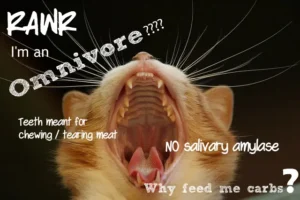
There has been some evidence that dogs and cats are getting fatter on diets with carbohydrates and there is more evidence of diabetes.
Let’s create a rule – if you are to going to feed any carbs for dogs and cats, it should be minimal.
Is that all that pets require nutritionally?
Usually at this point, other analysis on pet food stop their research. Look at the back of most dry pet foods and you will see that they are likely missing the next 2 components: guaranteed probiotics and enzymes.
- Enzymes – these are typically made by your pet’s body (pancreas) or can be found in pet food. Enzymes help digest and use food efficiently. They are responsible for a countless number of functions related to the immune system. Without the help of enzymes, your pet will have problems digesting proteins (protease), carbs (amylase), and fats (lipase). When your pet’s body is depleted of enzymes, there is no going back. Note that like most of the other necessary building blocks, enzymes are destroyed by heat.
- Probiotics – these are the helpful, beneficial bacteria in your pet’s intestines that ensure good health and digestion. Two sources of probiotics are:
- your pet’s food (if it is not subjected to heat) and
- within your pet’s intestines.
What next after knowing pet food nutrition?
In our next blog, we’ll try to put all these necessary nutritional building blocks together as a benchmark.
To use a poor metaphor, the fuel that you put in your car matters when it is new to ensure longevity.
However, this metaphor breaks down on several fronts when it is applied to our dogs and cats.
Dogs and cats are complex beings and the fuel they consume matters enormously in building the necessary structure for a healthy life.
The above information should set up the prologue for the next blogs on choosing pet foods:
Share what you think about this blog with us below.
References
1, 2 Delmar R. Finco, DVM, Ph.D., “Effects of Dietary Protein Intake on Renal Functions” 1992
Effects of aging and dietary protein intake on uninephrectomized geriatric dogs
Protein and calorie effects on progression of induced chronic renal failure in cats


[…] our prior blog on “How to choose pet food. What should be in your pet food- (PART 0), ” we discuss Vitamin D, which is a Fat Soluble Vitamin. First of all, Vitamin D is an […]
[…] How to choose pet food. What should be in your pet food- (PART 0) […]